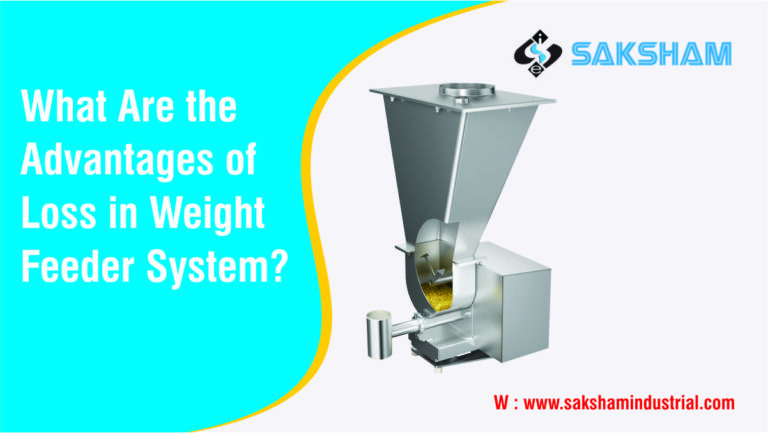At SAKSHAM we fabricate Loss in Weight Feeder that us engineered and built with a vigorous design according to the needs of the customers. While manufacturing, unique consideration is given to maintenance and dependability for long term industrial type operations so as to have enduring relations with our clients.
The Loss in Weight Feeder is considered as an all around when it comes to bulk material handling system. They come to rescue for operations when all other feeders fail to give a solution. That is why they have gained enormous popularity and still continue to be the most popular one.
Below are the benefits of Loss in Weight Feeder system:Advantages of Loss in Weight Feeder System
#1: AccuracyIn practice, with today’s highly developed weighing and control technologies, dependably high performance accuracy is regularly realized, despite the significant demands placed on weighing and control operations in loss in weight feeding.
#2: RangeThis weight feeding systems are accessible for the total range of rates encountered in plastics compounding & extrusion operations.
#3: Material HandlingAny feeding device appropriate to the process material can be utilized (for example, screw, auger, vibrating tray, etc). Even liquids whose specific gravity fluctuates can be gravimetrically controlled by substituting the hopper/feeder with a holding tank and pump or control valve.
#4: Material ContainmentLoss in Weight Feeders willingly lends themselves to finish material containment where dusting or safety/toxicity concerns apply.
#5: TareUnder the loss in weight principle, moment dissimilarity in weight matter, not absolute weight. Thus, for the purpose of feed rate control, tare becomes immaterial.
#6: WeighingConsidering the fact that loss in weight feeding involves the exact detection of small, moment to moment changes in system weight while at the same time weighing a moderately enormous feeding system, the demands on the weighing system are significant. Such measurement need the highest potential levels of resolution, linearity & strength along with sophisticated filtering and signal processing to extract important weight data from spurious disturbances for example jostling or ambient vibration in the process environment.
#7: IsolationThis feeder must be successfully isolated from their environment for precise weighing. Flexible supply and discharge associations typically suffice for process connections and suitable measures may be required at installation to guarantee that in plant vibration is not transmitted to the feeder through its mounts.
#8: RefillPeriodic hopper refill is required. During this deliberately concise phase, whether accomplished physically or by an automated system, weight measurement is unavailable because of the inflow of material, temporarily preventing accurate gravimetric control. For materials who density does not increase significantly with increasing head load (such as pellets, for example), feeder speed can be held constant throughout refill. Or, for variable thickness powders, granules and the like, feeder speed may be automatically reduced to gradually slow feeder speed during refill, precisely compensating for the effect of rising head load-related material compaction.
Saksham Industrial would be happy to offer its Loss in Weight Feeder for your industrial operations . For more details, you can make a contact with us @ +91-9910976777 / +91-8527956635.





Recent Comments